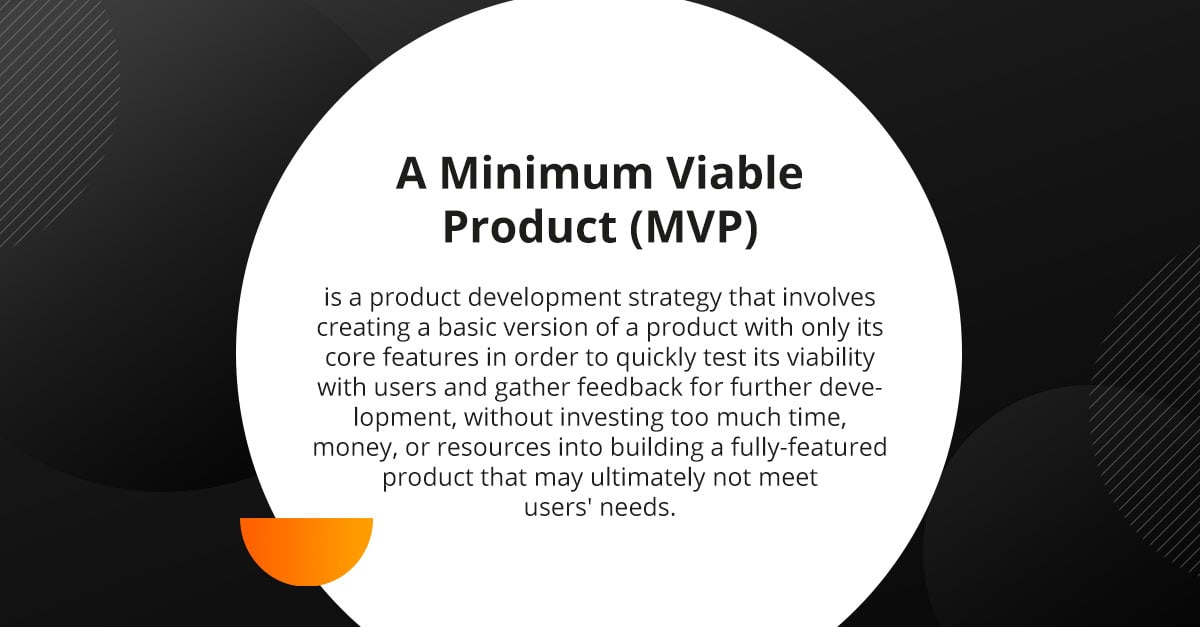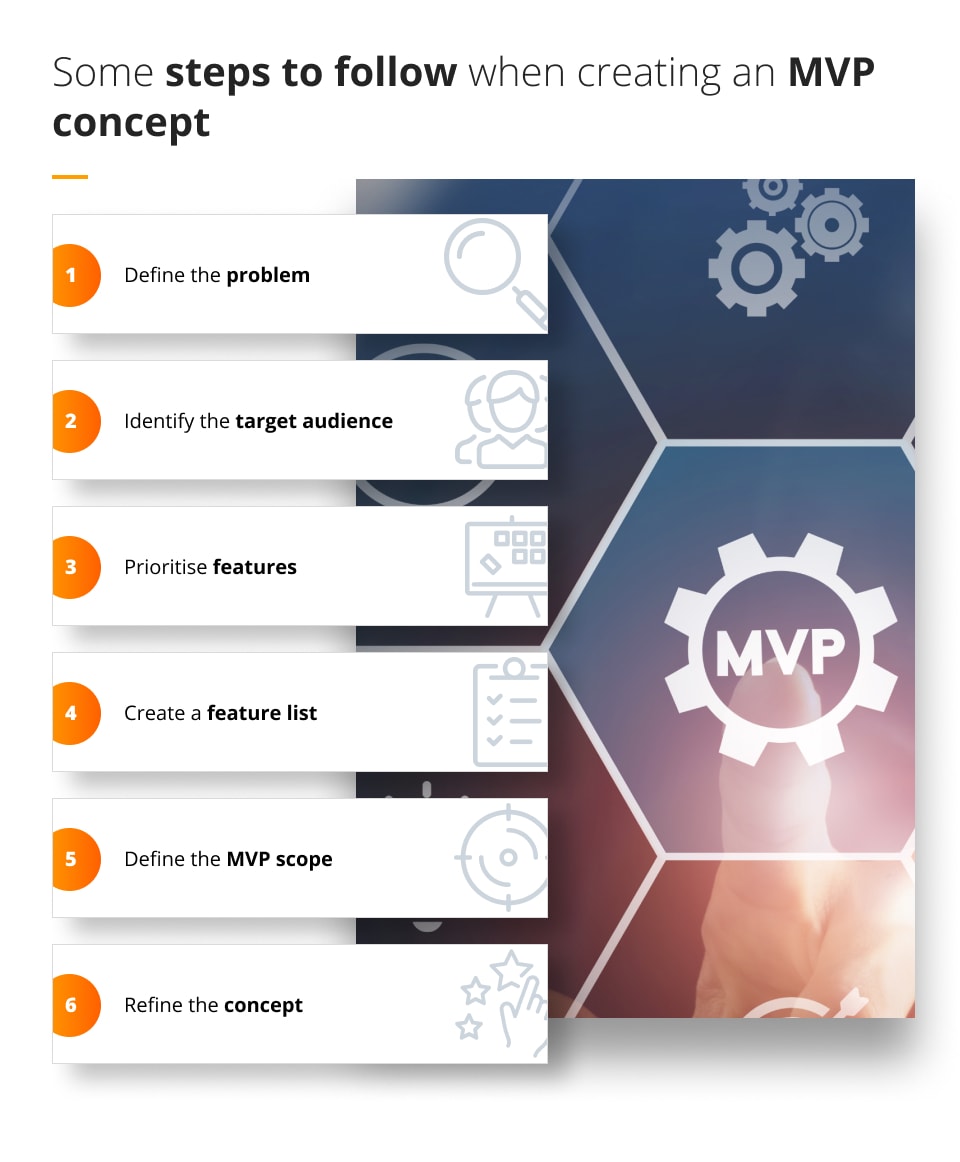
What is a Minimum Viable Product? How to define an MVP?
Today we look at Minimum Viable Product – do read on to check what it is, how it works and how to create an MVP concept.
What does a Minimum Viable Product (an MVP) mean?
The concept of a Minimum Viable Product was first introduced by Eric Ries as a part of his Lean Startup methodology – a method of managing and building a startup via experimenting and testing products during their development processes, using findings from tests and feedback.
Types of MVPs
An MVP (a Minimum Viable Product) is a powerful concept that can be used in many different industries.
MVPs in Business
In business, an MVP approach is a great way to test business hypotheses, new solutions and make informed decisions about which ideas to pursue and which to abandon.
In particular, MVPs in business is used in:
- product development – to quickly validate new ideas and test the viability of new products,
- marketing – by testing different marketing strategies with small audience,
- customer acquisition – by testing different customer acquisition channels before investing in a larger marketing campaign,
- business model validation – by creating a basic version of the product or service and testing it with early adopters.
MVPs in Programming
In programming, an MVP (a Minimum Viable Product) is a development approach that focuses on delivering a basic version of a software application or feature with just enough functionality to satisfy early adopters and gather feedback for further development, minimising development time, costs and risks.
Such an approach allows developers to validate assumptions, test new ideas and iterate quickly, which ultimately leads to more successful and innovative software products. Key aspects of MVPs in programming include prioritising features, agile development, user feedback, refinement, and iteration.
MVPs in Software and Product Development
In software development, an MVP (a Minimum Viable Product) is an approach that focuses on creating a basic version of a software product with minimal features to validate the product concept and gather user feedback.
It is an effective way to test the viability of a software product while minimising risk and investment. In this case, the lean startup approach allows software development teams to create innovative products that meet user needs and deliver value to the business.
How do you create an MVP concept? Defining an MVP
Creating an MVP (a Minimum Viable Product) concept involves defining the core features of a product that will provide the most value to the target audience.
Here are some steps to follow when creating an MVP concept:
- Define the problem: Start by identifying the problem your product will solve. This can be done through customer research, surveys, and previous target users’ feedback.
- Identify the target audience: Determine who your target audience is and what their needs and pain points are. This will help you to understand what features are most important to them.
- Prioritise features: Identify the key features that are essential to the product’s functionality and value proposition. These should be the features that address the most important user needs and provide the most value.
- Create a feature list: Create a list of features that will be included in the MVP. This list should be limited to only the essential features, keeping in mind that the MVP is a minimum viable product.
- Define the MVP scope: Define the scope of the MVP and determine what will be included in the initial release. This can be done by prioritising features and determining what can be developed within a specific time frame and budget.
- Refine the concept: Refine the MVP concept based on user feedback and testing. Iterate on the product until it meets the needs of the target audience and provides the desired value.
What are the examples of Minimum Viable Products?
Here are some examples of Minimum Viable Products (MVPs):
- Dropbox: Dropbox’s MVP was a simple video demonstrating how the product would work. This allowed the company to gather feedback and validate the concept before investing significant resources into product development.
- Airbnb: Airbnb’s MVP was a simple website that allowed users to rent out air mattresses in their living rooms. This basic concept allowed the company to test the market and gather feedback before expanding to other types of accommodations.
- Twitter: Twitter’s MVP was a simple platform that allowed users to send and receive short text messages. This basic functionality was enough to test the market and validate the concept before expanding to include additional features.
- Uber: Uber’s MVP was a basic app that allowed users to request a ride from nearby drivers. This simple concept allowed the company to validate the market before expanding to include additional features like in-app payments and ratings.
An MVP and validated learning
The concept of a Minimum Viable Product is closely tied to the idea of validated learning – a process of testing assumptions and validating them through data and feedback, in order to learn what works and what doesn’t work, and to iterate and improve a product or business idea. By launching an MVP, a company can quickly learn whether its assumptions are valid, without investing significant resources in a fully developed product that may not be successful.
Once the MVP is launched, validated learning involves gathering feedback from users and analysing data to validate or invalidate the initial assumptions that the product was based on. This feedback can be used to make data-driven decisions about how to improve the product, and to iterate on the MVP until it provides value to users and meets the needs of the target market.






